How Can We Help?
Me Auriga
Me Auriga

Me Auriga’s mainboard is the updated version of Orion and is equipped with multiple onboard sensors for temperature and sound intensity, a gyroscope, and a buzzer driver. It features a one-key power switch, wireless Bluetooth control and firmware upgrade capability. The original two red ports have been updated to four ports with the same functions. Port 5 is isolated only with serial communication function, so it cannot be used to update a program but only for communication. It is also compatible with USB serial port. Ports 6-10 are compatible with dual-digital, analog, I²C bus, unibus, and analog serial ports. Me Auriga has an encoder motor port, a smart servo port and an LED Ring Light Panel port (with power switch). The size of PCB is also enlarged.
Technical Parameters
Output Voltage: 5V DC & 6-12V DC
Dimensions (L x W x H): 100 × 65 × 20 mm
Features
- Supports DC motors, stepper motors, servos, smart servos, encoder motors, etc.
- Can drive two encoder motors and support instantaneous over-current protection for 4A.
- Supports mainboard control and wireless firmware upgrade via Bluetooth.
- One-button power switch to control the whole circuit.
- Ports 5-10 support continuous 5V DC and 3A (max 4A) output.
- Ports 1-4 support continuous 3.5A (max 5A) output.
- Onboard gyroscope, sound sensor, passive buzzer and temperature sensor.
- Ports 5-10 have short circuit protection and over-current protection for 4A.
- Ports 1-4 have short circuit protection and over-current protection for 5A.
- USB port with antistatic protection.
- Compatible with Arduino IDE.
- Compatible with RJ25 connector.
- Provides a dedicated library compatible with Arduino, and a user-friendly interface which is powerful and easy to understand.
- Supports mBlock 5 and mBlock 3.
Electronic Component Diagram of Me Auriga
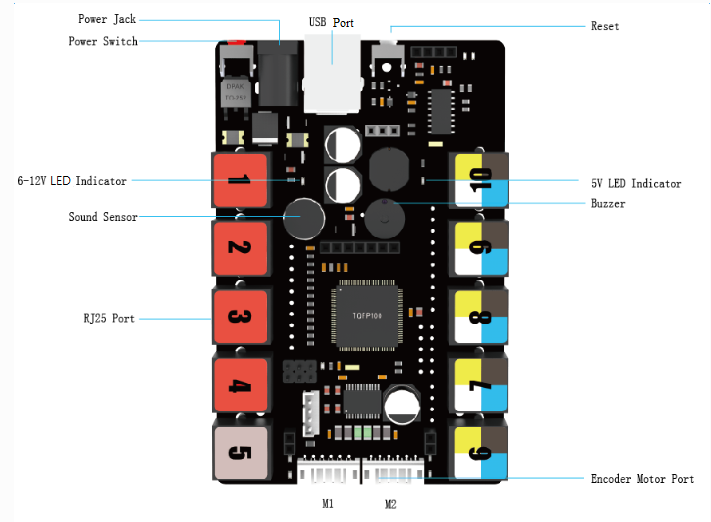
Introduction to Ports
| Color | Function |
| Output voltage: 6-12V DC | |
| Single digital interface | |
| Dual digital interface | |
| Hardware serial port | |
| Single & dual analog interface | |
| I²C port |
Pin Diagram
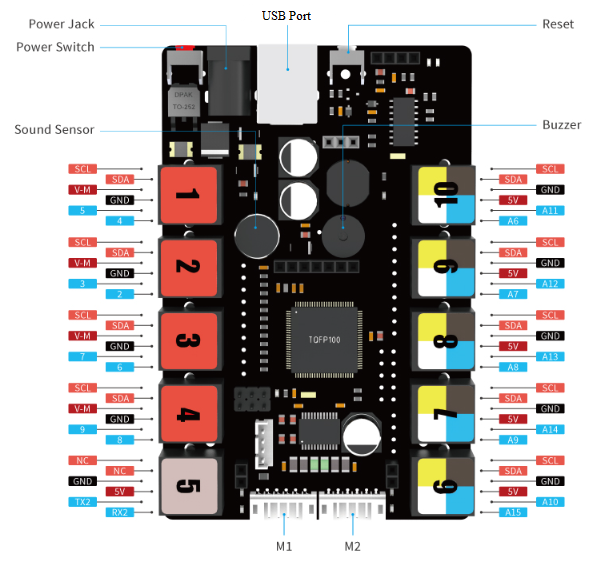
| Component | Code |
| Sound sensor | A1 |
| Buzzer | D45 |
| Encoder motor 1 | D11 (PWM) |
| D48 | |
| D49 | |
| Encoder motor 2 | D10 (PWM) |
| D46 | |
| D47 |
Introduction to Onboard Sensors
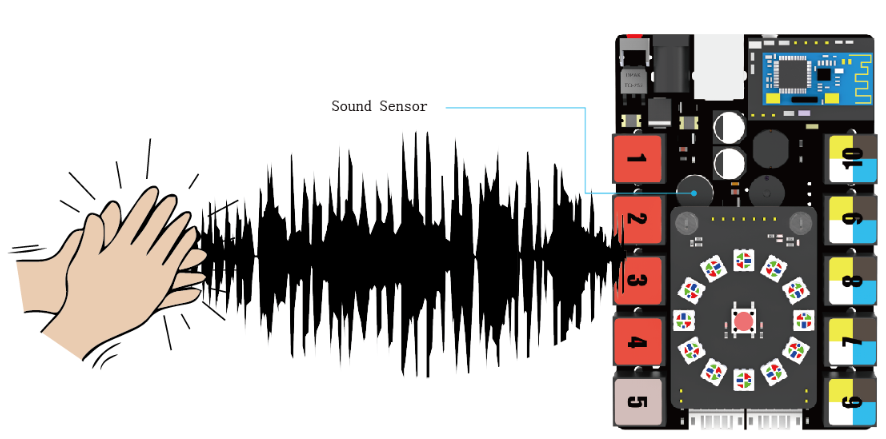
The sound sensor on Me Auriga is designed to detect the intensity of sound in the surrounding environment. The sound sensor is a microphone sensor. Its main component is an LM2904 low-power amplifier. It can be used in interactive projects, such as a voice-activated switch and a robot that follows dance movements.
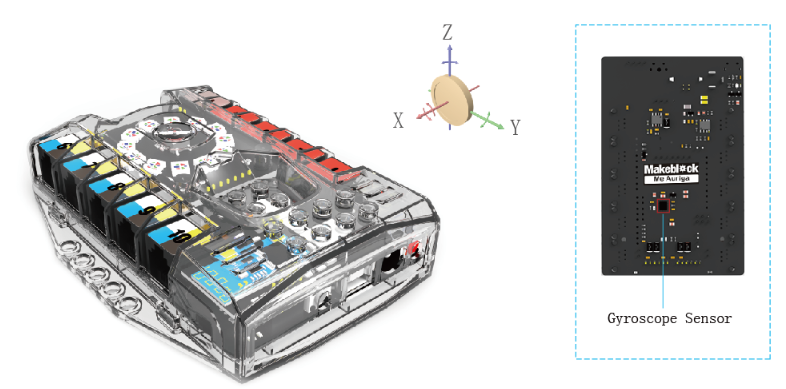
The gyroscope sensor on Me Auriga is an ideal module to detect robot motion and posture. It has a 3-axis accelerometer, a 3-axis angular velocity sensor, and a motion processor. It can be applied to a self-balancing robot or other mobile devices.
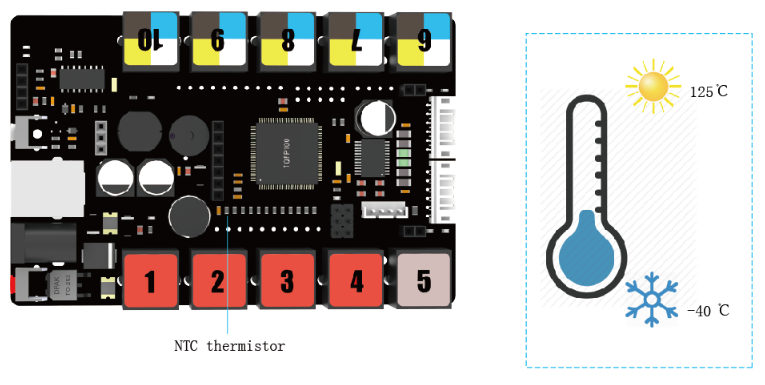
The NTC thermistor on Me Auriga can be used to detect the ambient temperature.
Programming Guide
Arduino is an open-source electronics prototyping platform with flexible and easy-to-use hardware and software. The software contains Arduino IDE and core libraries. The IDE is written in Java and is based on the Processing development environment.
Me Auriga is compatible with Arduino Mega 2560, so you can write a program in Arduino IDE. If you use Makeblock electronic modules, we suggest that you install Makeblock Library.
2. Programming with mBlock 5 and mBlock 3
Me Auriga supports programming with mBlock 5 and mBlock 3. mBlock 5 and mBlock 3 are beginner-friendly programming software. They inherit the simple and easy-to-use characteristics of Scratch and are integrated with the high scalability of Arduino. They support online control and program uploads. You only need to drag and drop blocks on mBlock 5 and mBlock 3 to write a program. It is just as simple as stacking blocks. They also help beginners primarily understand programming language.
Notes
- Me Auriga uses 6-12V DC voltage.
- Be cautious of short circuit.
- Prevent contamination from water, acidic and alkaline liquids, and solids.
- Do not discard arbitrarily.
Schematic Diagram
Download the schematic diagram
